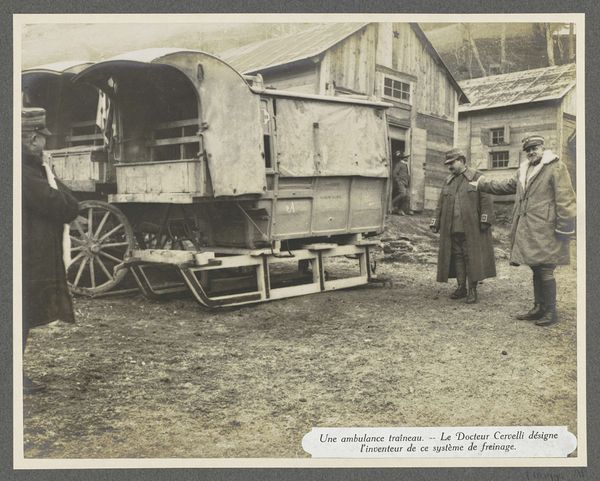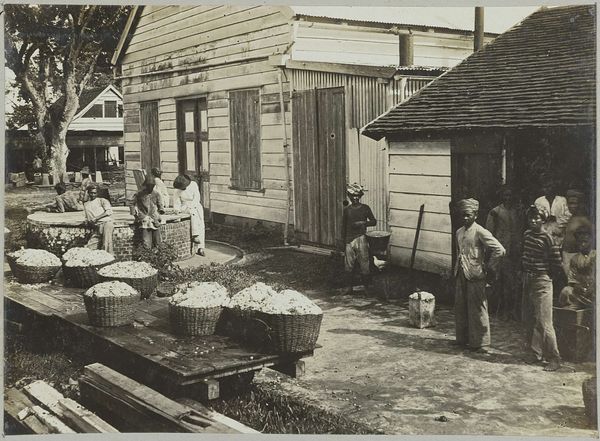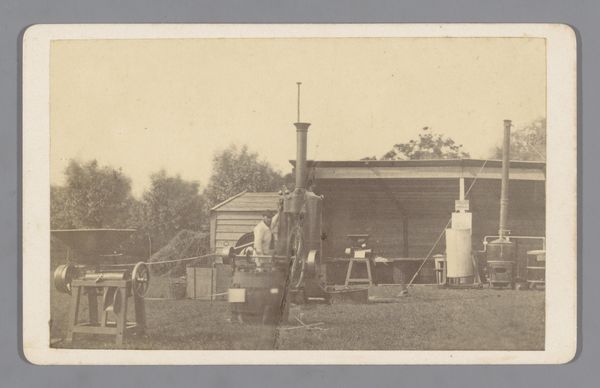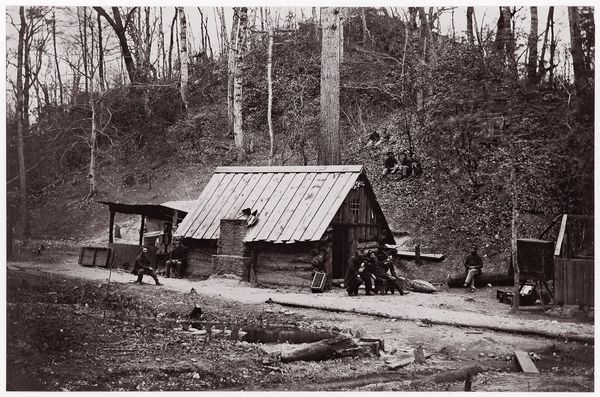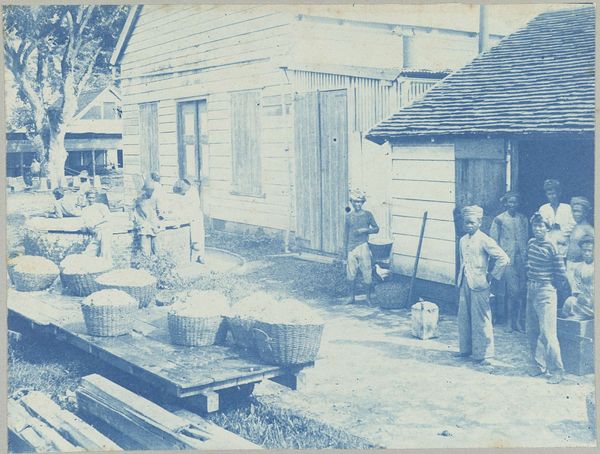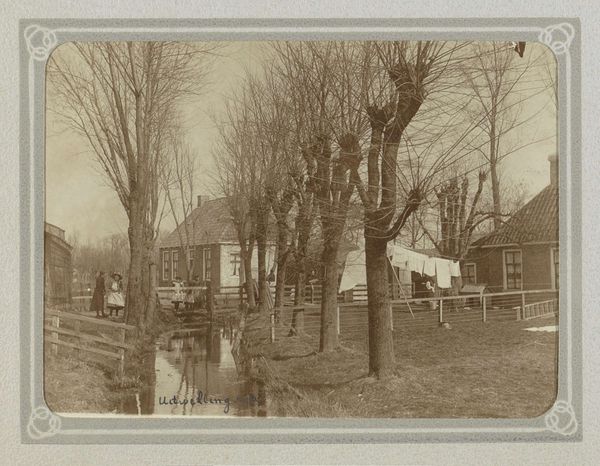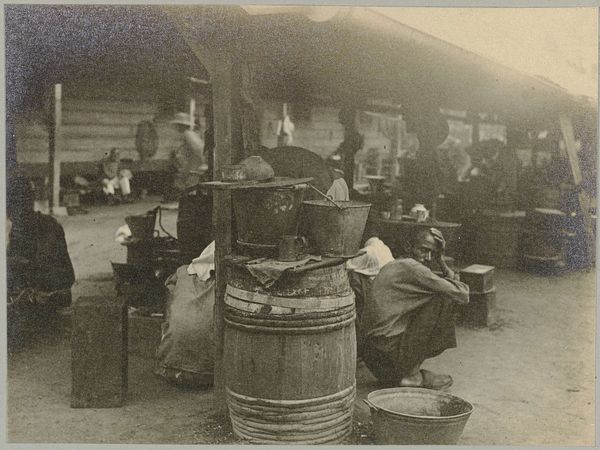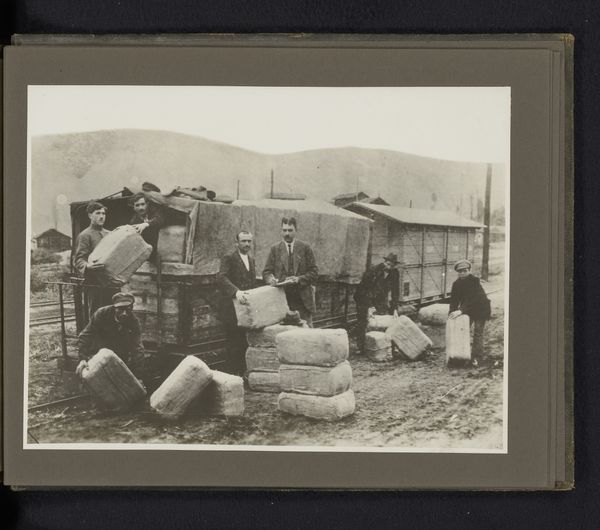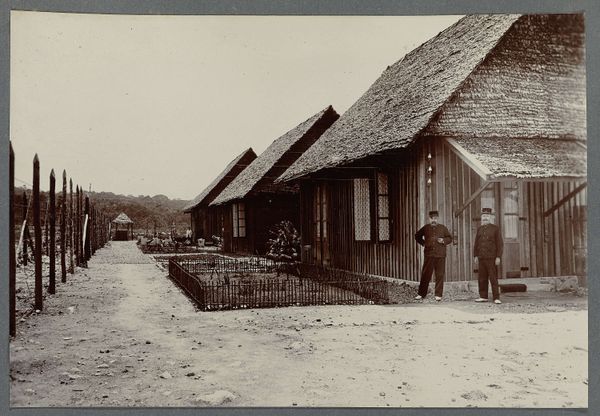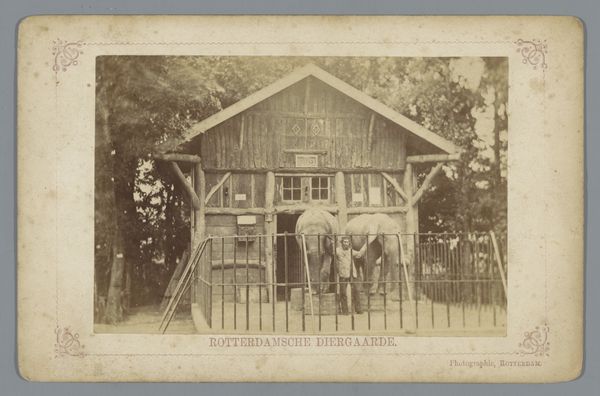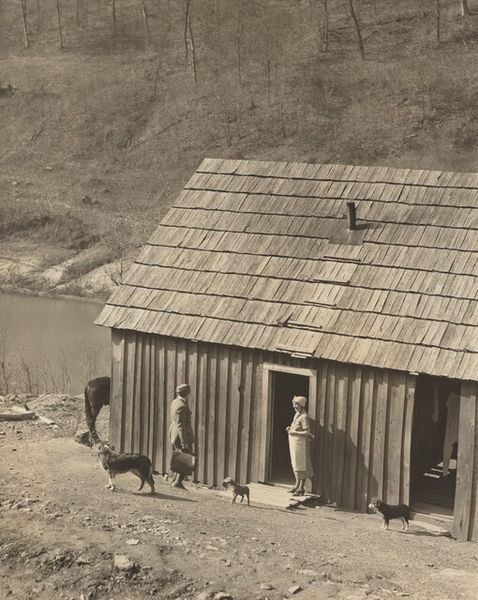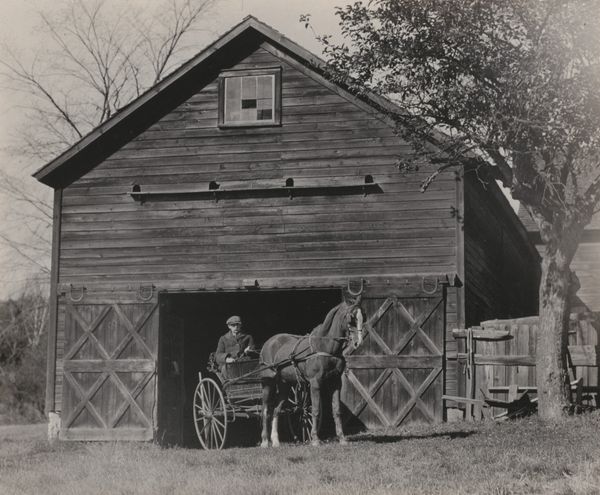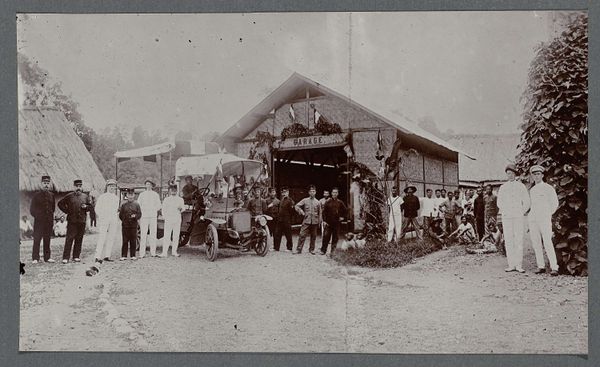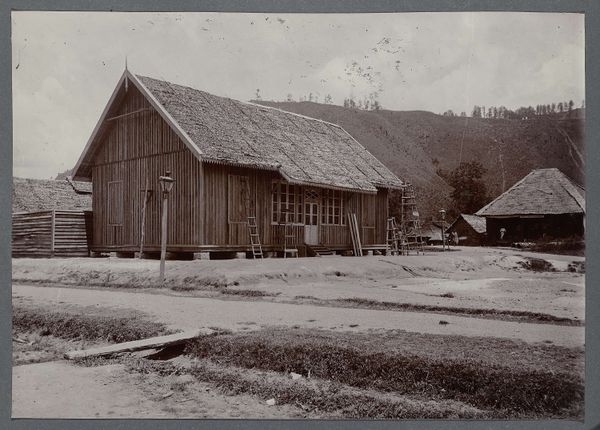
photography, gelatin-silver-print
#
pictorialism
#
impressionism
#
landscape
#
photography
#
gelatin-silver-print
#
genre-painting
Dimensions: image: 10 x 15.3 cm (3 15/16 x 6 in.) support: 13.6 x 22 cm (5 3/8 x 8 11/16 in.)
Copyright: National Gallery of Art: CC0 1.0
Editor: We’re looking at "Freienwalde a. O.," a gelatin-silver print made in 1886 by Alfred Stieglitz. It feels like a candid snapshot, but something about the men gathered at what looks like a bathhouse also makes me uneasy. What's your take on it? Curator: That unease is understandable. While seemingly a casual genre scene, it’s vital to understand the power dynamics inherent in the male gaze, even a century ago. The men seem to be observing someone within that doorway, or perhaps commenting on who will be going in. Consider the German text; in English, it says something like "For baths." Who do you think is afforded access to these "baths"? And, conversely, who is excluded, or othered? Editor: So you're saying it’s less about a simple scene and more about issues of access, class, and potentially gender, given it specifies "baths?" Curator: Precisely. Early photography, like this, wasn’t merely documenting; it was participating in shaping social perceptions. Stieglitz, despite his artistic talent, was also a man of his time, part of a specific social class. How does his perspective influence what he chooses to capture and, more importantly, how he captures it? Are we, as viewers, complicit in that gaze? Editor: It definitely reframes how I see the photograph. It’s no longer just a historical image, but a document of social power at play. I was looking at it only for its composition and atmosphere. Curator: It's a beautiful image, no doubt, with its soft focus and subtle tones characteristic of Pictorialism. But acknowledging the historical and social context allows us to have a much more critical conversation. What do you make of the composition now, understanding that the artist has choices on who he includes and doesn't? Editor: I’m thinking about what is left out, the unseen, rather than what is presented. So the figures on the path and behind the fence…they could be further emphasizing exclusion? Thanks for making me rethink my first impressions! Curator: Exactly. By examining the "unseen," we unpack the broader narrative embedded within this single frame. I've found my own assumptions challenged!
Comments
No comments
Be the first to comment and join the conversation on the ultimate creative platform.
